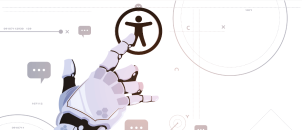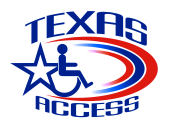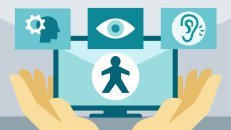The first thing that comes to mind when considering creating a Shopify ADA-compliant store is the avoidance of legal issues. That’s a good thing to keep in mind, but if you want your site to stand out, you have to design it with the users in mind. By ‘users’, I mean everyone, including disabled individuals.
What Are ADA and WCAG?
ADA, which stands for the “American Disabilities Act,” was enacted in 1990 and was created to ensure that people living with disabilities can enjoy and use “places of public accommodation” equally. These places of public accommodation have come to include websites. So any website that isn’t made to suit disabled individuals is breaking the law.
See Top Shopify Web Accessibility Plugins 🔥
The ADA recommends that websites follow the WCAG 2.0 level AA(Web Content Accessibility Guidelines), a set of standards set up by the Web Accessibility Initiative as part of the World Wide Web Consortium’s (W3C) effort to make the web accessible to all.
Why Should My Shopify Store Be ADA-compliant?

As a Shopify merchant, you might ask yourself, why should my Shopify store be ADA-compliant? The answer is straightforward! You should make your Shopify store compliant because that’s the right thing to do. In doing so, you save yourself from potential legal issues, and you give all your users an accessible interface.
You may also want an ADA-compliant Shopify site because of a lawsuit filed against you.
Common Compliance Issues You Can Correct By Yourself
1Contrast
Contrast
Your website needs to be colorful, right? Wrong. Your website needs to be accessible. Use a contrast checker to verify that your background and foreground elements have a ratio of at least 4.5:1, which is the minimum WCAG recommendation.
2Alt-text
Alt-text
As a Shopify store owner, you probably have products on display. Ensure you use descriptive text for each product. This way, people using screen readers can have a mental picture of what every item is.
3Headings and Subheadings
Headings and Subheadings
Name your headers appropriately to convey the right message about each section of your page.
After these minor fixes, you still need to consult a web accessibility expert.
How to Achieve Shopify ADA Compliance
You may have come across various Shopify plugins that promise to make your website 100% accessible automatically. That’s not entirely correct. The road to creating a fully ADA-compliant Shopify store begins with consulting an expert.
The Invaluable Practice of Accessibility Audit
A web accessibility expert will provide you with good insight into your site’s need to become ADA-compliant after performing an accessibility audit.
An accessibility audit is an assessment of your website( manually or through the use of overlays) to identify any issues with web accessibility.
After the audit, there’s usually the temptation to find a quick fix for your website, but that is not a good approach. This is because quick fixes usually involve plugins and other automated overlays that cannot guarantee 100% resolution of compliance issues.
Pros and cons of Automated Web Accessibility Solutions
Pros
- Able to fix overlying issues
- Provides temporary remediation of compliance issues that could help evade legal consequences
- Anyone can do it
Cons
- Cannot fix underlying issues (which make up the bulk of compliance issues)
- It gives a false sense of remediation
- Some plugins – on Shopify – require the end-user to activate them before they are functional
Pros and Cons of Manual Web Accessibility Solutions
Pros
- Performed by an expert, hence usually done thoroughly
- Fixes overlying and underlying issues
- Reduces the risk of having false positives
- It does not require any effort on the part of the end-user
Cons
- It may be more expensive
- Consumes more time
Both means of fixing your Shopify ADA compliance issues have advantages and disadvantages. Therefore, I would recommend that you use a hybrid solution. This means getting the best of both worlds – the manual and the automated solutions. It involves consulting a web accessibility expert who performs the audit of your Shopify site. Based on the issues discovered on your Shopify site, the expert can tell you how best to combine automated and manual solutions to provide you with the best results.
Final Thoughts
You began the process of correcting your Shopify ADA compliance issues with an audit. Make sure you end it with another audit, and then another, and then some more. Auditing never ends because your site will undergo constant changes, so keep auditing frequently.







